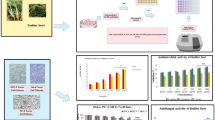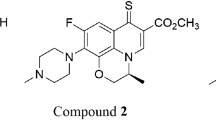Abstract
Dialysed latex C-serum supernatant (DCS) sub-fraction from the rubber tree (Hevea brasiliensis) was reported to exert significant anti-proliferative effect on specific cancer cell lines, especially in human triple negative breast cancer (MDA-MB-231) and human liver carcinoma (HepG2) cells. In the present study, two human non-cancer origin cell lines, MCF-10A (human breast epithelial cells) and HDFa (human adult dermal fibroblast cells), showed least susceptibility when treated with DCS sub-fraction at concentration range 0–100 µg/mL using 2,5-diphenyl tetrazolium bromide (MTT) assay. Genotoxicity of DCS sub-fraction was assessed through Ames test, in vitro mouse lymphoma assay, and in vitro micronucleus assay. All genotoxicity experiments were tested with the presence and absence of S9 mixture as metabolic activation system. Ames test results showed negative result of mutagenicity as no clear dose-dependent relationship was observed despite mutagenic potential was detected in frame shift-based TA98 and TA1535 Salmonella typhimurium strains. Mouse lymphoma assay produced non-linear dose-dependent effect in experiments without the presence of S9. Meanwhile, experiment with the presence of S9 resulted in an inverse effect of the dose-dependent relationship. In micronucleus assay, the dose-dependent cytotoxicity effect of DCS sub-fraction showed no correlation with the increase number of cells containing micronuclei but appeared to be time-dependent. In conclusion, DCS sub-fraction showed no significant positive results in genotoxicity assays. In vivo genotoxicity assays should be conducted to ensure the safe use of DCS sub-fraction in further exploration for biological applications.



Similar content being viewed by others
References
d’Auzac J, Jacob JL (1989) The composition of latex from Hevea brasiliensis as a lactiferous cytoplasm. In: d’Auzac J, Jacob JL, Chrestin H (eds) Physiology of rubber tree latex. CRC Press Inc., US, pp 59–96
Ramos MV, Demarco D, Costa Souza IC, De Freitas CD (2019) Review: Laticifers, latex, and their role in plant defense. Trend Plant Sci 24(6):553–567
Tan D, Hu X, Fu L, Kumpeangkeaw A, Ding Z, Sun X, Zhang J (2017) Comparative morphology and transcriptome analysis reveals distinct functions of the primary and secondary laticifer cells in the rubber tree. Sci Rep 7:3126
Daruliza KMA, Lam KL, Yang KL, Priscilla JT, Sunderasan E, Ong MT (2011) Anti-fungal effect of Hevea brasiliensis latex C-serum on Aspergillus niger. Eur Rev Med Pharmacol Sci 15(9):1027–1033
Lam KL (2018) Cytotoxic effect, anti-proliferative and cell death mechanism of latex C-serum and sub-fractions using cell-based assay, (Ph.D.). Universiti Sains Malaysia, Penang, Malaysia, pp 1–207
OECD (2017), Overview on genetic toxicology test TGs, OECD Series on Testing and Assessment, No. 238, OECD Publishing, Paris. https://doi.org/https://doi.org/10.1787/9789264274761-en. Accessed 11 Sept 2018.
OECD (1997) Test No. 471 Bacterial reverse mutation test, OECD guidelines for the testing of chemicals, Section 4, OECD Publishing, Paris. https://doi.org/https://doi.org/10.1787/20745788. Accessed 26 May 2017
Sugiyama K, Yamada M, Awogi T, Hakura A (2016) The strains recommended for use in bacteria reverse mutation test (OECD 471) can be certified as non-genetically modified organism. Gene Environ 38(2):1–3
OECD (2015) Test No. 490 In vitro mammalian cell gene mutation tests using the thymidine kinase gene, OECD guidelines for the testing of chemicals, Section 4, OECD Publishing, Paris. https://doi.org/https://doi.org/10.1787/9789264242241-en. Accessed 26 May 2017
Moore MM, Honma M, Clement J, Bolcsfoldi G, Burlinson B, Cifone M, Clarke J, Delongchamp R, Durward R, Fellos M, Gollapudi B, Hou S, Jenkinson P, Lloyd M, Mejeska J, Myhr B, O’Donovan M, Omori T, Riach C, SanStankowski RLE Jr, Thakur AK, Van Goethem F, Wakuri S, Yoshimura I (2006) Mouse lymphoma thymidine kinase gene mutation assay: follow-up meeting of the international workshop on genotoxicity testing—aberdeen, scotland, 2003—assay acceptance criteria, positive controls, and data evaluation. Environ Mol Mutagen 47(1):1–5
Moore MM, Honma M, Clement J, Bolcsfoldi G, Burlinson B, Cifone M, Clarke J, Delongchamp R, Durward R, Gollapudi B, Hou S, Jenkinson P, Lloyd M, Mejeska J, O’Donovan M, Omori T, Riach C, San R, Stankowski LE Jr, Thakur AK, Van Goethem F, Wakuri S, Yoshimura I (2003) Mouse lymphoma thymidine kinase gene mutation assay: International Workshop on Genotoxicity tests Workgroup report—Plymouth, UK 2002. Mutat Res 540(2):127–140
Schisler MR, Moore MM, Gollapudi BB (2013) In vitro mouse lymphoma (L5178 Tk+/-− 3.7.2C) forward mutation assay. Methods Mol Biol 1044:27–50
Moore MM, Clive D, Howard BE, Batson AG, Johnson KO (1981) The utilization of trifluorothymidine (TFT) to select for thymidine kinase-deficient (TK−/−) mutants from L5178Y/TK+/− mouse lymphoma cells. Mutat Res Mutagen Relat Subj 85(5):363–378
Lopez-Gomez C, Levy RJ, Sanchez-Quintero MJ, Juanola-Falgorana M, Barca E, Garcia-Diaz B, Tadesse S, Garone C, Hirano M (2017) Deoxycytidine and deoxythymidine treatment for thymidne kinase 2 deficiency. Ann Neurol 81(5):641–652
OECD (2014) Test No. 487 In vitro mammalian cell micronucleus test, OECD guidelines for the testing of chemicals, Section 4, OECD Publishing, Paris. https://doi.org/https://doi.org/10.1787/20745788. Accessed 26 May 2017
Meireles JR, Cerqueira E (2011) Use of the micronucleus test on Tradescantia (Trad-MCN) to evaluate the genotoxic effects of air pollution. In: Moldoveanu AM (ed) Air Pollution—New Developments, IntechOpen, pp 245–262
Donovan BMJ (2017) Literature review: our current understanding of the mechanism underlying micronuclei-mediated mutagenesis in cancer. Doctoral dissertation, Harvard Medical School
Jacobs MN, Janssens W, Bernauer U, Brandon E, Coecke S, Combes R, Edwards P, Freidig A, Freyberger A, Kolanczyk R, McArdie C, Mekenyan O, Schmieder P, Schrader T, Takeyoshi M, van der Burr B (2008) The use of metabolising systems for in vitro testing of endocrine disruptors. Curr Drug Metab 9(8):796–826
Kirkland D, Pfuhler S, Tweats D, Aardema M, Corvi R, Darroudi F, Elhajouji A, Glatt H, Hastwell P, Hayashi M, Kasper P, Kirchner S, Lynch A, Marzin D, Maurici D, Meunier JR, Muller L, Nohynek G, Parry J, Parry E, Thybaud V, Tice R, van Bathem J, Vanparys P, White P (2007) How to reduce false positive results when undertaking in vitro genotoxicity testing and thus avoid unnecessary follow-up animal tests: report of an ECVAM Workshop. Mutat Res 628(1):31–55
Cox JA, Fellows MD, Hashizume T, White PA (2016) Review: The utility of metabolic activation mixtures containing human hepatic post-mitochondrial supernatant (S9) for in vitro genetic toxicity assessment. Mutagenesis 31:117–130
Moir GFJ (1959) Ultracentrifugation and staining of Hevea latex. Nature 184:1626–1628
Yeang HY, Siti Arija MA, Faridah Y, Sunderasan E (2002) Allergenic proteins of natural rubber latex. Method 27:32–45
Mossmann T (1983) Rapid colorimetric assay for cellular growth and survival: application to proliferation and cytotoxicity assays. J Immunol Methods 65(1–2):55–63
Vogel HG, Maas J, Hock FJ, Mayer D (eds) (2006) Drug discovery and evaluation: safety and pharmacokinetic assays. Springer, New York, pp 509–523
McFadyen MC, Melvin WT, Murray GI (2004) Cytochrome P450 enzymes: novel options for cancer therapeutics. Mol Cancer Ther 3(3):363–371
Paolillo AT, Souza CS, Oliveira ID, Petrilli AS, Toledo RC (2020) CYP genotypes are associated with toxicity and survival in osteosarcoma patients. J Adolesc Young Adult Oncol. https://doi.org/10.1089/jayao.2019.0180.Accessed26August
Ames BN, Gurney EG, Miller JA, Bartsch H (1972) Carcinogens as frame shift mutagens: metabolites and derivatives of 2-acetylaminofluorene and other aromatic amine carcinogens. Proc Nat Acad Sci 69(11):3128–3132
Lara K, Antonius TL, Andreas HG (2019) Mechanistic reactivity descriptors for the prediction of Ames mutagenicity of primary aromatic amines. J Chem Inf Model 59(2):668–672
Azmin I, Marinah MA, Shamsul BAR, Ong CW, Fauziah TA, Aidilla M (2018) Determination of polyphenol contents in Hevea brasiliensis and rubber-processing effluent. Malays J Anal Sci 22(2):185–196
Moore MM, Harrinton-Brock K, Cole J (1999) Review: Issues for conducting the microtiter version of the mouse lymphoma thymidine kinase (TK) assay and a critical review of data generated in a collaborative via using the microtiter method. Mutagenesis 14(3):271–281
Utani K, Kohno Y, Okamoto A, Shimizu N (2010) Emergence of micronuclei and their effects on the fate of cells under replication stress. PLoS ONE 5:e10089
Obe G, Beek B, Vaidya VG (1975) The human leukocyte test system. III. Premature chromosome condensation from chemically and x-ray induced micronuclei. Mutat Res 27:89–101
Kalsbeek D, Golsteyn RM (2017) Review: G2/M-phase checkpoint adaptation and micronuclei formation as mechanisms that contributed to genomic instability in human cells. Int J Mol Sci 18:2344–2360
Hoffelder DR, Luo L, Burke NA, Watkins SC, Gollin SM, Saunders WS (2004) Resolution of anaphase bridges in cancer cells. Chromosoma 112:389–397
Luzhna LY, Kathiria P, Kovalchuk O (2013) Micronuclei in genotoxicity assessment: from genetics to epigenetics and beyond. Front Genet 4(131):1–17
Terradas M, Martin M, Tusell L, Genesca A (2009) DNA lesions sequestered in micronuclei induce a local defective-damage response. DNA Repair (Amst) 8:1225–1234
Tang HM, Tang HL (2018) Anastasis: recovery from the brink of cell death. R Soc Open sci 5:180442. https://doi.org/10.1098/rsos.180442
Terradas M, Martin M, Tusell L, Genesca A (2010) Genetic activities in micronuclei: is the DNA entrapped in micronuclei lost for the cell? Mutat Res 705:60–67
Decordier I, Cundari E, Kirsch-Volders M (2008) Survival of aneuploid, micronucleated and/or polyploid cells: crosstalk between ploidy control and apoptosis. Mutat Res 651:30–39
Hintzsche H, Hemmann U, Poth A, Utesch D, Lott J, Stopper H (2017) Review: fate of micronuclei and micronucleated cells. Rev Mutat Res 771:85–98
Tang ZZ, Yang J, Wang X, Zeng M, Wang J, Wang A et al (2018) Active DNA end processing in micronuclei of ovarian cancer cells. BMC Cancer 18:426–436
Ferreira M, Mendonca RJ, Coutinho-Netto J, Mulato M (2009) Angiogenic properties of natural rubber latex biomembranes and the serum fraction of Hevea brasiliensis. Braz J Phys 39(3):565–569
Maron DM, Ames BN (1983) Revised methods for the Salmonella mutagenicity test. Mutat Res 113(3–4):173–215
Hamel A, Roy M, Proudlock R (2016) The bacterial reverse mutation test. Genet Toxicol Test. https://doi.org/10.1016/B978-0-12-800764-8.00004-5.Accessed26May2017.80-130
Mortelmans KE, Zeiger E (2000) The ames salmonella/microsome mutagenicity assay. Mutat Res 455(1–2):29–60
Simmon VF, Kauhanen K, Tardiff R (1977) Mutagenic activities of chemicals identified in drinking water. In: Scott D, Bridges B, Sobels F (eds) Progress in genetic toxicology. Elsevier, Amsterdam, pp 249–258
Brusick DJ, Simmon VF, Rosenkranz HS, Ray VA, Stafford RS (1980) An evaluation of the Escherichia coli WP2 and WP2 uvrA reverse mutation assay. Mutat Res 76:169–190
Williams RV, DeMarini DM, Stankowski LF, Escobar PA, Zeiger E, Howe J et al (2019) Are all bacterial strains required by OECD mutagenicity test guideline TG471 needed? Mutat Res Gen Toxicol Environ 848:503081
Gatehouse D (2012) Bacterial mutagenicity assays: test methods. In: James MP, Elizabeth MP (eds) Genetic toxicology: methods in molecular biology. Springer Protocol, Humana Press, New York, pp 38–51
Acknowledgements
This work was supported by Rubber Research Institute Malaysia (RRIM) [under research project SEAC S13BTP0460]; and the Universiti Sains Malaysia (USM), Penang Malaysia Fundamental Research Grant Scheme (FRGS) (FRGS/1/2014/SG03/USM/02/1).
Author information
Authors and Affiliations
Contributions
YKL, OMT, and SS designed and performed the experiments, processed experimental data, and wrote the manuscript. YKL and SS performed the statistical analyses and assisted in manuscript writing. ES and ARN assisted in result interpretation. SS, OMT, and ES supervised the project. All authors discussed the results and contributed to the manuscript.
Corresponding authors
Ethics declarations
Conflict of interest
The authors declare that they have no competing interests.
Additional information
Publisher's Note
Springer Nature remains neutral with regard to jurisdictional claims in published maps and institutional affiliations.
Rights and permissions
About this article
Cite this article
Lee, Y.K., Thong, O.M., Sunderasan, E. et al. Cytotoxicity and genotoxicity of Hevea brasiliensis latex C-serum DCS sub-fraction as anticancer agents. J Rubber Res 23, 273–285 (2020). https://doi.org/10.1007/s42464-020-00056-6
Received:
Accepted:
Published:
Issue Date:
DOI: https://doi.org/10.1007/s42464-020-00056-6




